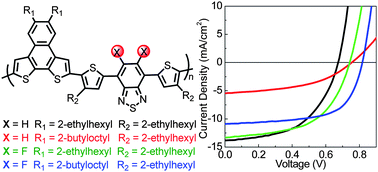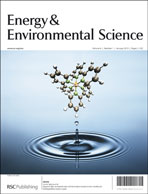Side chains and fluorine (F) substituents on conjugated polymers have shown significant impact on the photovoltaic properties of polymer-based bulk heterojunction (BHJ) solar cells, but their respective impact is largely studied independently. In order to disentangle the effect of side chains and F substituents, we comprehensively investigate a series of conjugated polymers with an identical backbone (PNDT–DTBT) but different combinations of side chains and F substituents. Surprisingly, these seemingly marginal changes to the polymer backbone strongly influence the morphology and structure in BHJ thin films (e.g., domain size/purity and the relative orientation of polymer crystallites), as manifested by resonant soft X-ray scattering (R-SoXS) and grazing-incidence wide-angle X-ray scattering (GI-WAXS), thereby exerting significant impact on the photovoltaic properties of these conjugated polymer-based BHJ cells. Devices based on the polymer with long bulky side chains and F substituents (C8,4-C6,2F) simultaneously exhibit large open circuit voltage (Voc), high short circuit current (Jsc) and good fill factor (FF), with an efficiency as high as 5.6% for this series of PNDT–DTBT polymers.

You have access to this article
 Please wait while we load your content...
Something went wrong. Try again?
Please wait while we load your content...
Something went wrong. Try again?


 Please wait while we load your content...
Please wait while we load your content...